 "user314" (user314)
"user314" (user314)
08/17/2020 at 11:00 • Filed to: flightline, Planelopnik, planelopnik history, boneyard, aircraft boneyards, amarg
 6
6
 2
2
 "user314" (user314)
"user314" (user314)
08/17/2020 at 11:00 • Filed to: flightline, Planelopnik, planelopnik history, boneyard, aircraft boneyards, amarg |  6 6
|  2 2 |
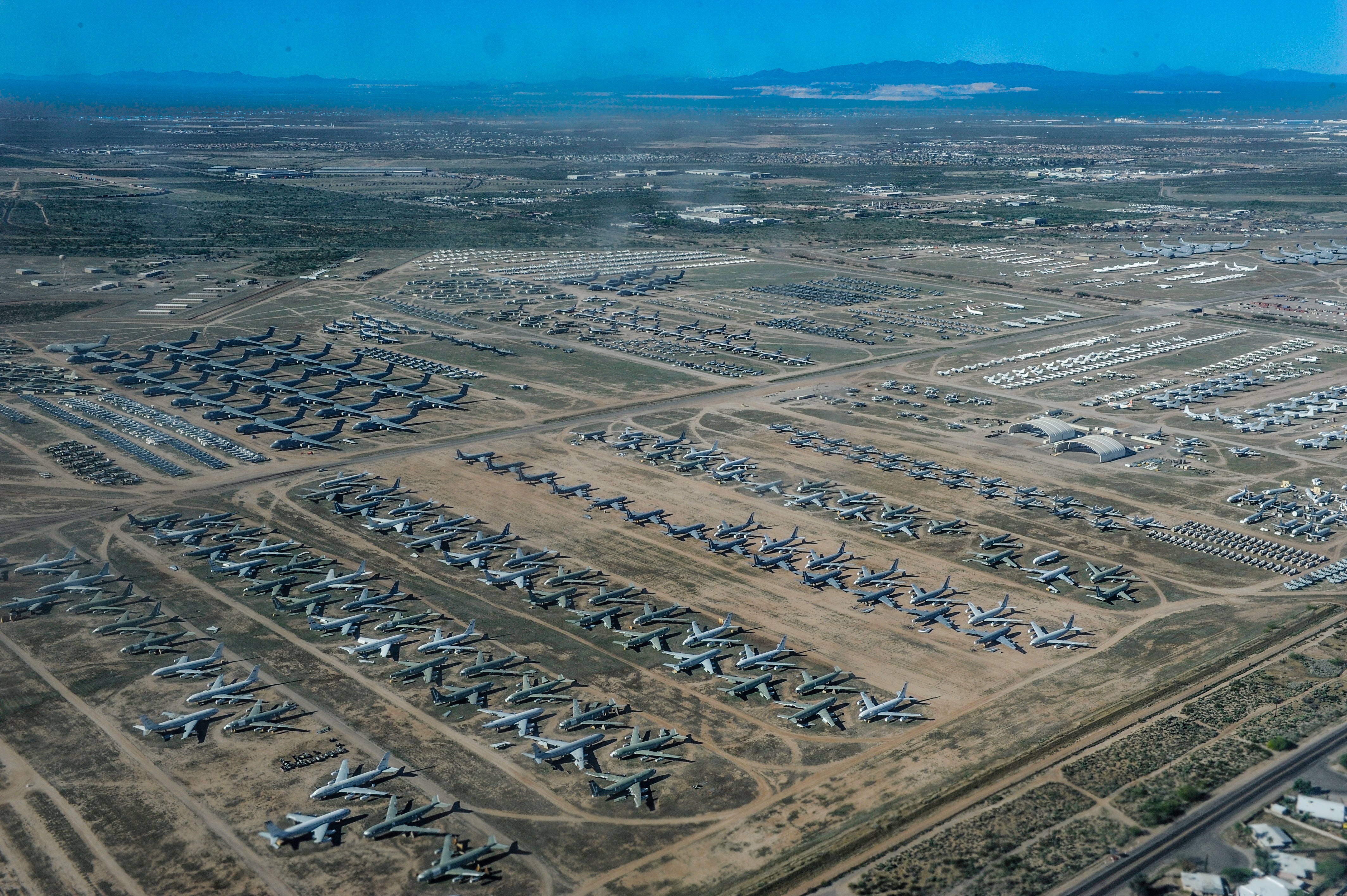
The 309th Aerospace Maintenance and Regeneration Group at Davis-Monthan AFB
Davis-Monthan AFB, Tuscon, Arizona, March 28, 2015
Though many ad-hoc aircraft boneyards existed previously, the establishment of the 4105th Army Air Forces Base Unit (Aircraft Storage) at !!!error: Indecipherable SUB-paragraph formatting!!! in 1946 was likely the first permanent location for the storage and reclamation of retired aircraft. The Tuscon location was chosen for its low humidity, scant precipitation and high altitude, all of which would reduce damaging corrosion of the air frames. The hard-packed soil would also allow movement of the aircraft without having to pave parking spots and lanes. In 1948, with the establishment of the independent USAF, the 4105th was renamed the 3040th Aviation Storage Depot. In 1965 it was renamed again to the Military Aircraft Storage and Disposition Center.
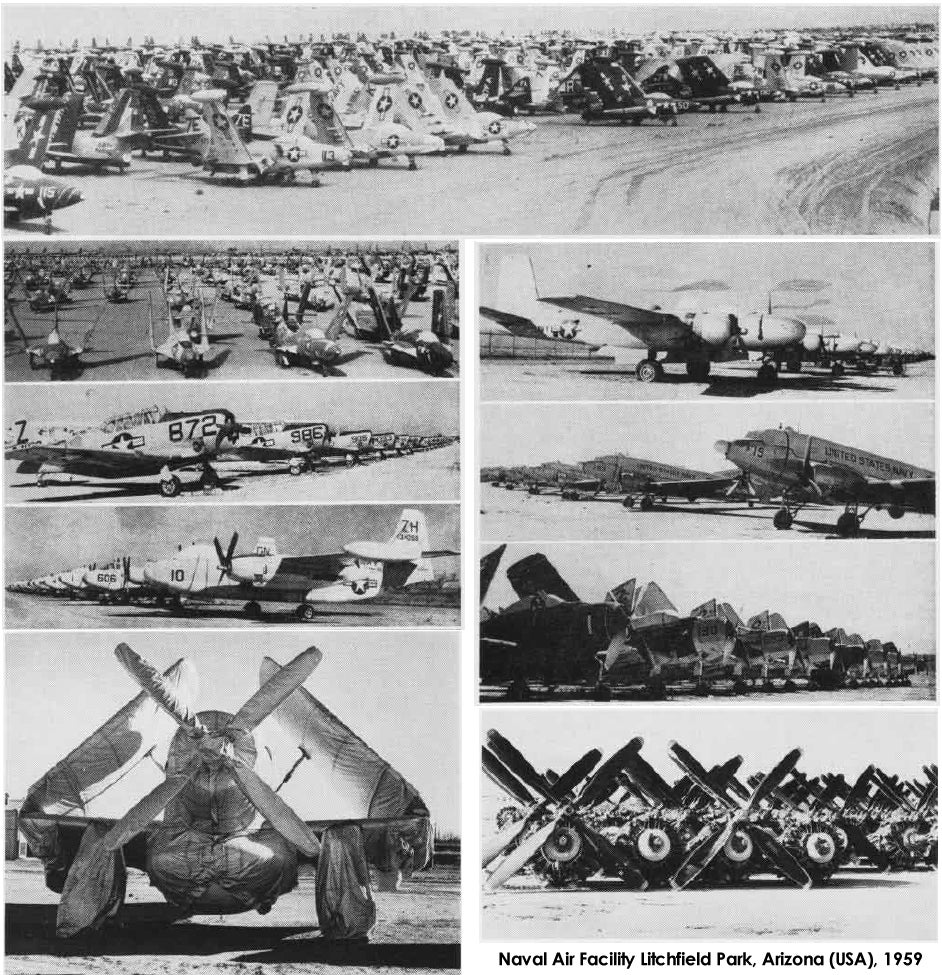 !!!CAPTION ERROR: MAY BE MULTI-LINE OR CONTAIN LINK!!!
!!!CAPTION ERROR: MAY BE MULTI-LINE OR CONTAIN LINK!!!
A separate boneyard was established at !!!error: Indecipherable SUB-paragraph formatting!!! , just outside Phoenix, to store aircraft from the Navy, Marines and Coast Guard. In 1968, the DOD consolidated all aircraft at Davis-Monthan, and NAS Litchfield was closed. The airfield was repurposed as a general aviation airport, first as Goodyear Municipal Airport, then as Phoenix Goodyear Airport. The field is not served by any airlines, but many do store out-of-service aircraft there.
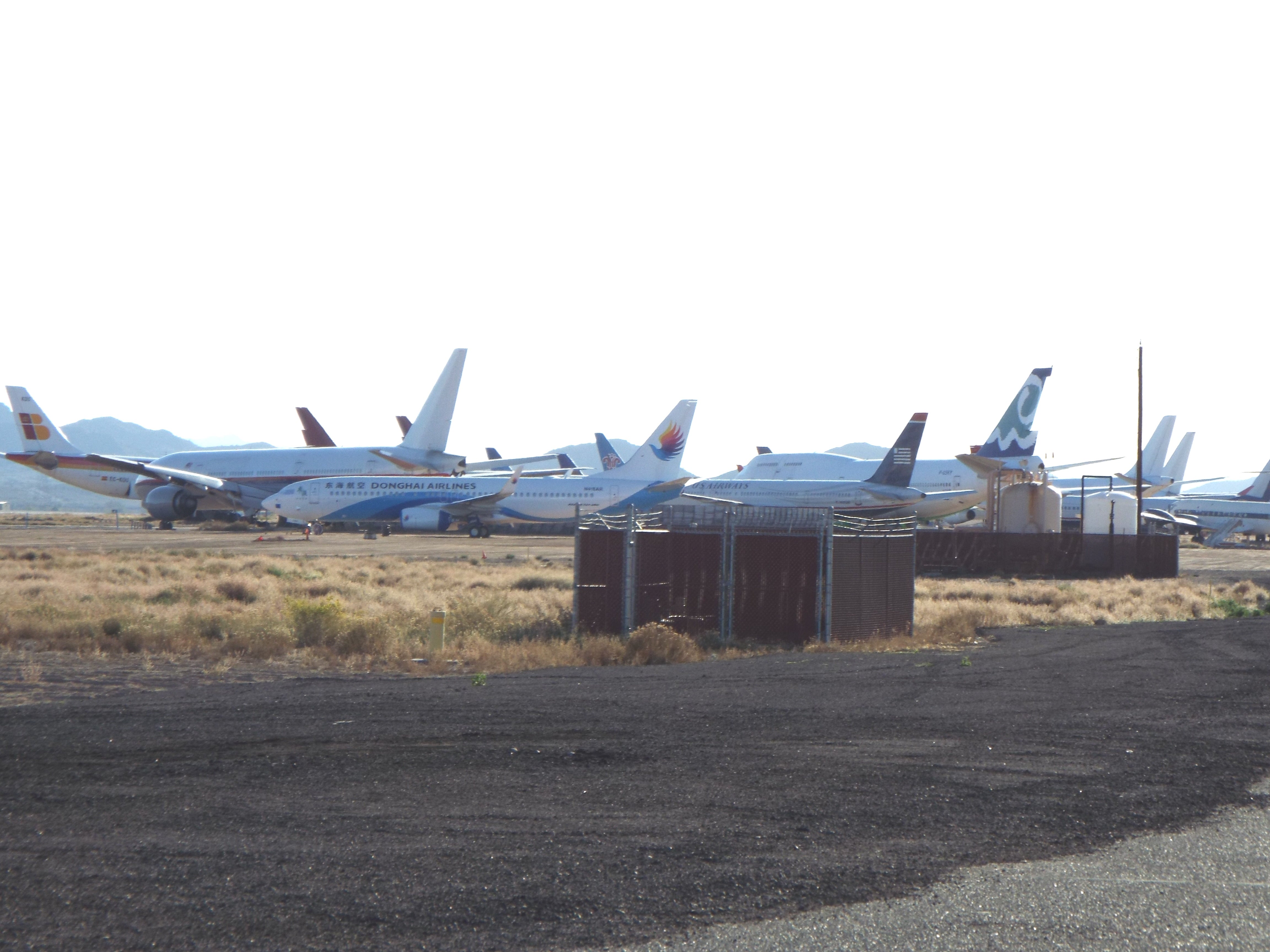
The Phoenix Goodyear boneyard in November of 2015
In the 1980s the Center began receiving ICBMs for destruction or recycling into satellite launchers, as well as aging B-52s being scrapped in compliance of START and SALT, and it was renamed to the Aerospace Maintenance and Regeneration Center
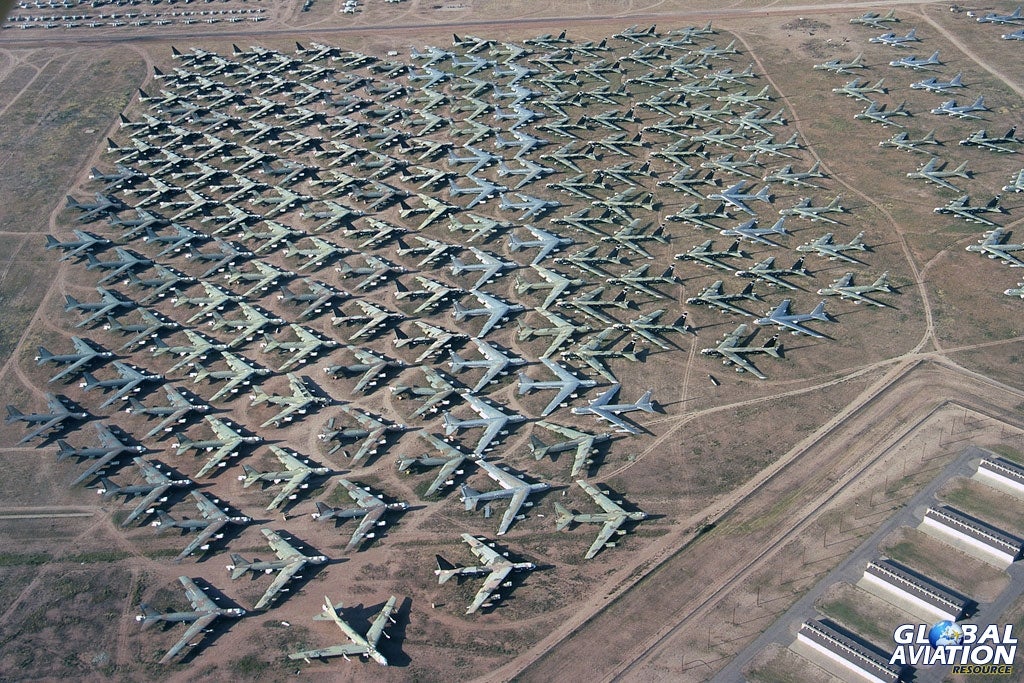
A gaggle of BUFFs awaiting a date with the guillotine
The B-52s in particular were dismantled by dissecting them with 13,000 pound guillotine, then left in pieces for a time (IIRC 90 days) for Soviet satellites to confirm destruction.
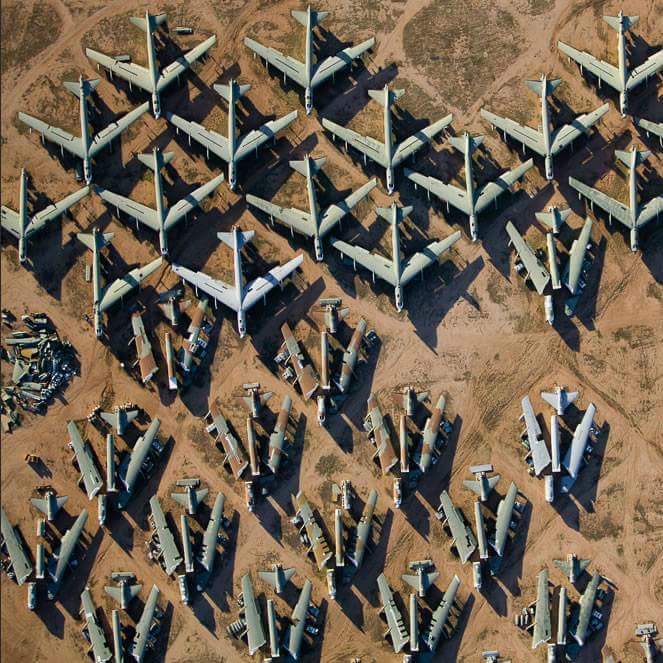
After the fall of the Soviet Union in the early 1990s and the attendant draw-down of US forces, the number of aircraft at AMARC increased greatly.
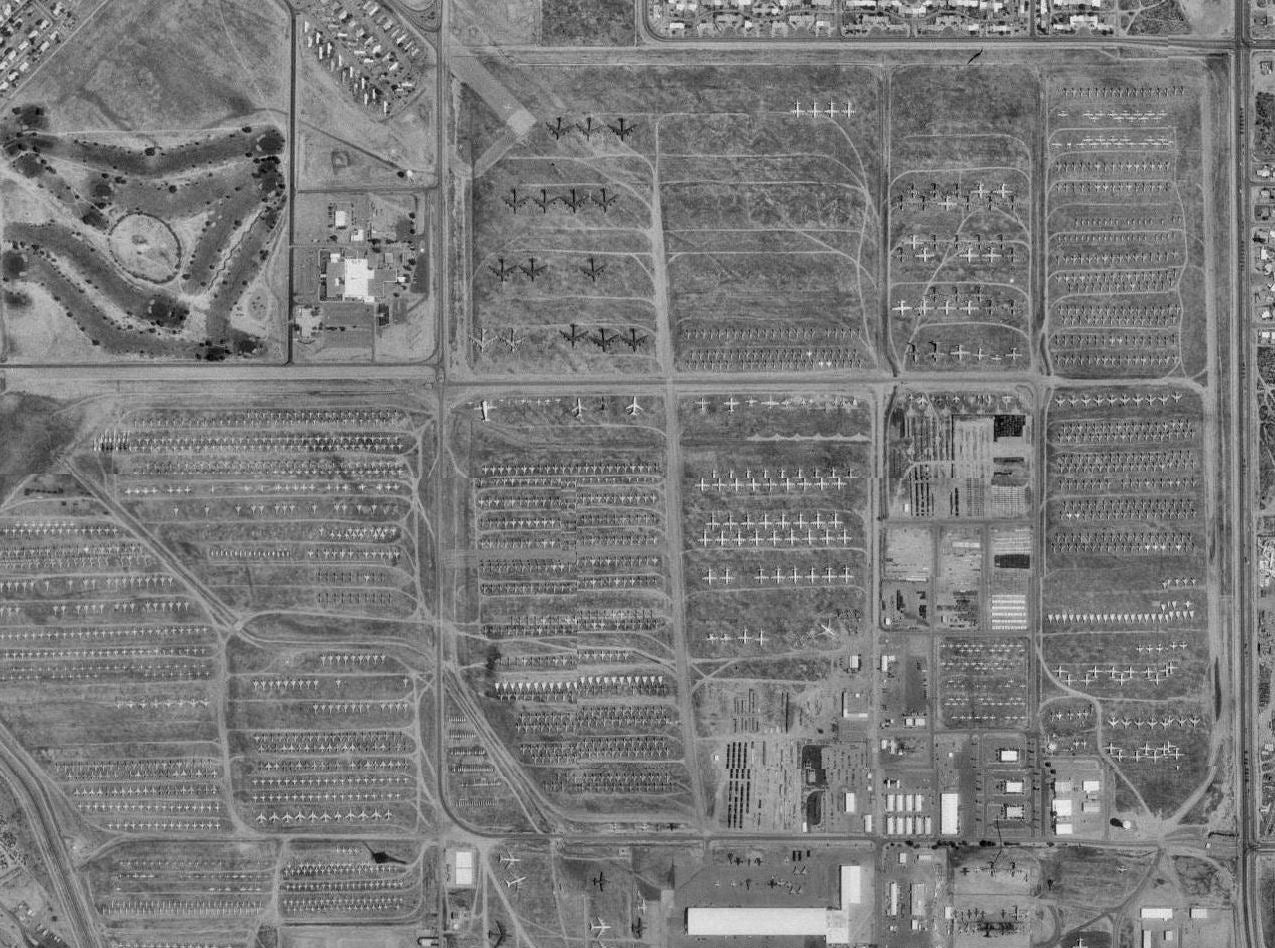
AMARC from space, May 1992
In 2007 the facility was redesignated the 309th Aerospace Maintenance & Regeneration Group, but things continue on pretty much as they always have. Aircraft, when they are delivered to AMARG, are assigned to one of four categories of storage:
Long Term (Type 1000) – Aircraft are kept intact for future use
Parts Reclamation (Type 2000) – Aircraft are kept, picked apart and used for spare parts
Flying Hold (Type 3000) – Aircraft are kept intact for shorter stays than Long Term
Excess of !!!error: Indecipherable SUB-paragraph formatting!!! needs (Type 4000) – Aircraft are sold off whole or in parts
Depending on which type of storage is assigned, some or all of the following steps are taken to prepare the aircraft:
Ejection seat charges and classified hardware are removed.
All aircraft are carefully washed with fresh water to remove environment residue and then allowed to dry.
The fuel system is protected by draining it and refilling with lightweight oil, which is then run through to coat the fuel system plumbing and engines, and then drained a gain, leaving a protective oil film.
The aircraft is sealed from dust, sunlight, and high temperatures. This is done using a variety of materials, including a high tech vinyl plastic compound that is sprayed on the aircraft. This compound is called Spraylat after its producer the Spraylat Corporation, and is applied in two coats, a black coat that seals the aircraft and a white coat that reflects the sun and helps to keep internal temperatures low.
The plane is then towed by a tug to its designated “storage” position.
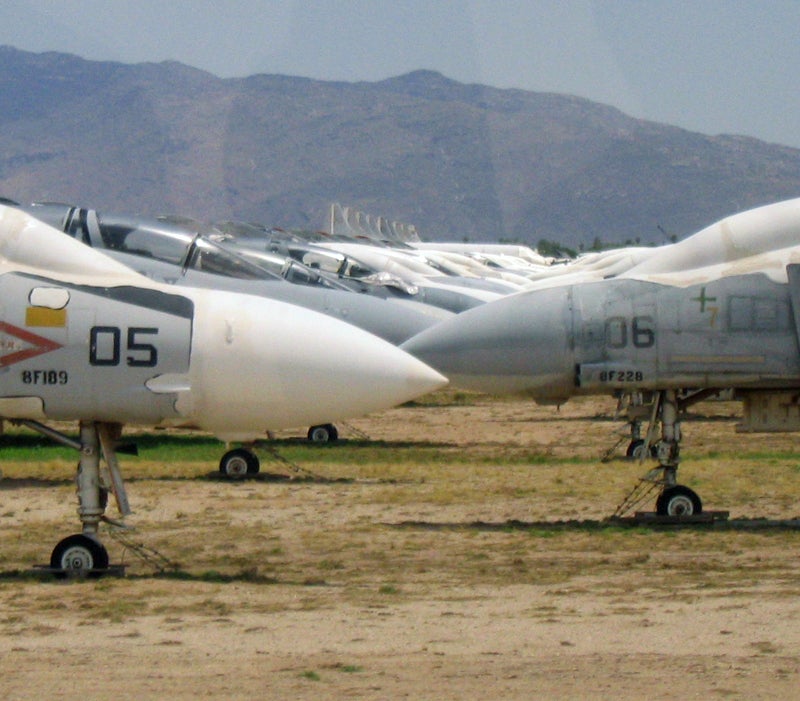
F-4 Phantom IIs masked by Spraylat and placed in AMARC for storage
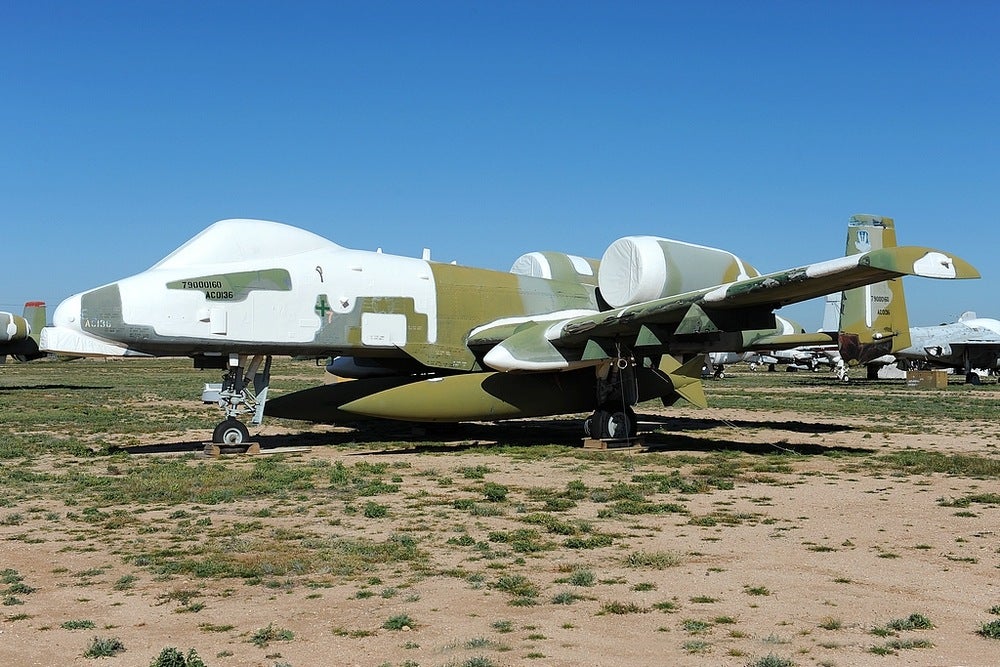
BRRRRT no more, an A-10 sealed in Spralat and stored at AMARG
Tours of the Boneyard were available from the !!!error: Indecipherable SUB-paragraph formatting!!! , at least until the Time of Corona. H opefully, they will be again sooner or later.
 facw
> user314
facw
> user314
08/17/2020 at 11:05 |
|
I think if you spun up all the aircraft there, you’d probably have something like the 5th most powerful air force in the world (even excluding the chopped up bombers). Which is of course part of the point, if we had a major war, we’d never be able to quickly surge production like we did in WWII, but we could reactivate planes from the boneyard with varying levels of difficulty to more quickly expand our air force.
 WasGTIthenGTOthenNOVAnowbacktoGTI
> facw
WasGTIthenGTOthenNOVAnowbacktoGTI
> facw
08/17/2020 at 14:18 |
|
Better to have them and not need them................